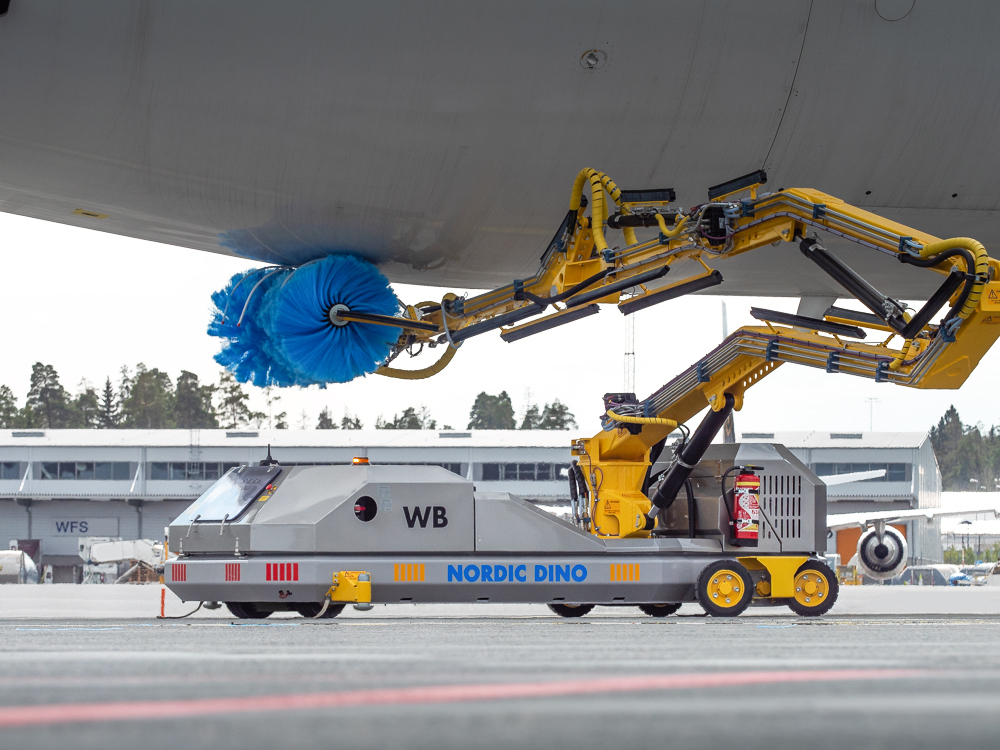 Efficiency and sustainability are the cornerstones of aviation decision-making these days. In this context, the routine task of aircraft maintenance, particularly exterior cleaning, stands out for its high resource use. Keeping aircraft exteriors clean has traditionally required substantial amounts of water and chemicals, impacting operational costs and environmental footprints. Innovative automated washing systems are changing the game. These systems dramatically reduce resource consumption and streamline operations, enabling airlines to maintain their fleets more effectively while significantly lowering their environmental impact. For industry leaders, embracing these technologies is not just about compliance—it's about spearheading a movement toward a sustainable future.
Efficiency and sustainability are the cornerstones of aviation decision-making these days. In this context, the routine task of aircraft maintenance, particularly exterior cleaning, stands out for its high resource use. Keeping aircraft exteriors clean has traditionally required substantial amounts of water and chemicals, impacting operational costs and environmental footprints. Innovative automated washing systems are changing the game. These systems dramatically reduce resource consumption and streamline operations, enabling airlines to maintain their fleets more effectively while significantly lowering their environmental impact. For industry leaders, embracing these technologies is not just about compliance—it's about spearheading a movement toward a sustainable future.
Transforming Resource Management
Effective resource management is crucial for sustainable aviation operations, especially in meeting stringent regulatory standards. Automated aircraft washing systems represent a significant leap forward, slashing traditional water usage from up to 11,300 liters to approximately 1,800 liters per wash—an 84% reduction. This drastic reduction not only alleviates financial burdens but also significantly mitigates the environmental impact associated with large-scale water use.
"With these advanced systems, we're not just saving water—we're setting a new standard in environmental stewardship for the aviation industry. Our technology ensures that airlines can drastically cut down on the resources they use without compromising on quality or compliance with global regulations," Veronika Andrianovaite, CCO of Nordic Dino Robotics AB, comments.
Moreover, these systems optimize chemical consumption, substantially reducing the quantities needed and thus reducing harmful runoff. By adopting such technologies, airlines not only comply with strict environmental regulations but also actively promote broader sustainability efforts. The precision and minimal waste enabled by advanced system programming exemplify how technological innovation can underpin both cost-effective and environmentally friendly operations.
Maximizing Operational Efficiency and Enhancing Aircraft Availability
Operational efficiency in aviation maintenance extends beyond energy and resource conservation to significant enhancements in aircraft availability. Veronika highlights the practical benefits: “Using the Nordic Dino robots, companies can reduce aircraft exterior cleaning times by up to 80%. For narrow-body jets like the Boeing 737, the required AOG time is reduced from 3 to just 1 hour. More significant time savings are seen with wide-body airliners like the Airbus A330 and the Boeing 777, where AOG time can be dropped from 12 to 4 hours. Considering how costly hangar time can be at some airports, introducing robot-assisted washing can save an impressive sum over a year.”
Addressing Implementation Challenges
While automated washing systems offer extensive benefits in terms of resource management and cost savings, their implementation is not devoid of challenges. Andrianovaite acknowledges, “The initial investment in automated systems can be substantial, but the long-term benefits—both financial and environmental—far outweigh the initial costs.” Ensuring that staff are adequately trained to operate these new systems is essential, yet manageable through strategic planning and phased implementation.
Reducing Costs While Advancing Sustainability Goals
Automated systems do more than just enhance resource management and operational efficiency; they also significantly reduce the costs associated with maintaining aircraft. By minimizing the time aircraft spend on the ground, these systems improve operational throughput and maximize revenue potential. Additionally, the consistency and thoroughness of automated cleaning extend the lifespan of aircraft exteriors, reducing the frequency and extent of costly repairs and overhauls. These financial savings are vital as airlines invest in technologies that align with environmental goals—a crucial factor as sustainable practices increasingly sway consumer preferences and shape regulatory expectations.
Enhancing Long-Term Sustainability Goals through Strategic Innovations
The broader impact of sustainable aviation maintenance practices, especially those enabled by automated washing systems, aligns closely with several United Nations Sustainable Development Goals. These systems ensure regular and efficient cleaning, maintaining optimal aerodynamics and reducing fuel consumption—a critical factor in lowering aviation's carbon emissions and supporting SDG 13 (Climate Action). Furthermore, by preserving paint quality and preventing corrosion, these systems minimize the need for frequent repaints and extensive repairs that involve hazardous chemicals, contributing to SDG 12 (Responsible Consumption and Production) and SDG 3 (Good Health and Well-being) by reducing hazardous waste and promoting safer work environments.
As the aviation industry continues to evolve towards more sustainable practices, automated washing systems stand out as essential tools for airlines seeking to diminish their environmental footprint while boosting operational efficiency. For carriers eager to explore the benefits of these innovative solutions, engaging with technology providers for pilot projects or consultations can be an excellent initial step. Implementing such systems not only aligns with global sustainability goals but also positions airlines as leaders in environmental stewardship within the industry.





